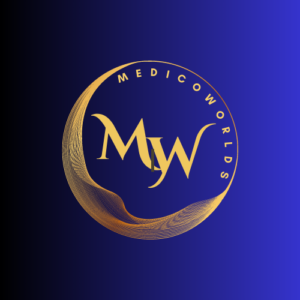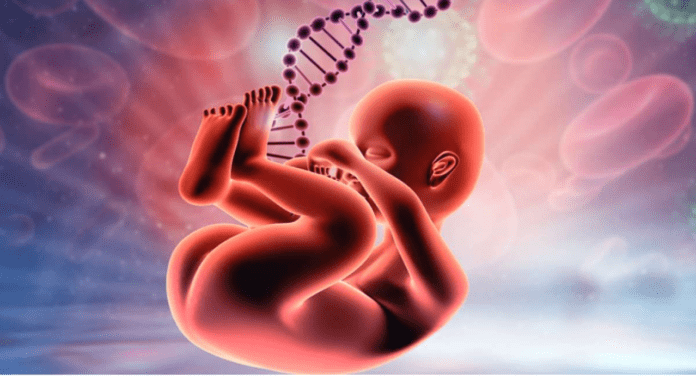The journey of pregnancy is a marvel of biology, a complex dance of development and nurturing. At the heart of this miracle lies the placenta, an often-overlooked yet irreplaceable organ. This vital lifeline sustains the developing fetus, playing a critical role in ensuring a healthy pregnancy. However, a question may arise: Can a pregnancy even be considered healthy pregnancy without the presence of a placenta? Let’s delve deeper into the placenta’s functions, explore the biological realities of pregnancy, and understand the limitations of current technology.

The Miracle of Life: Unveiling the Placenta’s Significance
Pregnancy is a breathtaking odyssey of transformation. From the moment of conception, a microscopic embryo embarks on a journey of incredible growth and development. Nestled within the mother’s womb, this tiny cluster of cells relies entirely on a specialized organ – the placenta – for survival.
The placenta acts as a bridge, connecting the developing baby to its mother. It fulfills a multitude of essential functions, ensuring the fetus receives the nourishment it needs to thrive while also removing waste products that could be harmful. Without the placenta, a healthy pregnancy simply isn’t possible.
Demystifying the Placenta’s Functions: A Facilitator and Protector
The placenta wears many hats, each crucial for fetal development. Let’s explore some of its key responsibilities:
-
Facilitating Nutrient Exchange: This vital function ensures the transfer of essential life-giving elements from mother to baby. Oxygen, the fuel for cellular respiration, and glucose, the primary source of energy, are transported across the placenta, nourishing the developing fetus. Conversely, waste products generated by the baby’s metabolism, like carbon dioxide, are also removed through the placenta.
-
Hormone Production Powerhouse: The placenta is a hormonal powerhouse, secreting a symphony of hormones essential for maintaining a healthy pregnancy. Progesterone, for instance, supports the growth of the uterine lining and prevents premature contractions. Estrogen, on the other hand, stimulates breast development in preparation for lactation after birth.
-
A Physical Barrier: The placenta acts as a guardian, protecting the fetus from harmful substances and pathogens that might be present in the mother’s bloodstream. It acts as a selective filter, allowing only essential nutrients and oxygen to pass through while filtering out potential threats. This ensures a sterile environment for optimal fetal development.
These are just some of the vital roles played by the placenta. Without this intricate and irreplaceable organ, a healthy pregnancy simply wouldn’t be possible.
The Impossibility of a Placenta-Free Pregnancy: Nature’s Design
The human body, in its incredible complexity, has evolved a specific system for nurturing a developing fetus. The placenta is an integral part of this design, absolutely essential for a viable pregnancy.
Biological Imperative: In the early stages of pregnancy, the developing embryo lacks the necessary organs for independent nutrient and waste exchange. Essential functions like gas exchange and waste removal are solely managed by the placenta. The placenta serves as the lifeline, connecting the baby to the mother’s circulatory system, ensuring its survival.
Fulfilling Essential Needs: Imagine a tiny astronaut, adrift in space without a life-support system. This is precisely the situation a fetus would find itself in without a placenta. The placenta provides the oxygen and nutrients needed for growth, removes waste products that could be toxic, and even acts as a barrier against harmful substances.
Alternative Gestation: Not Quite Placenta-Free: It’s important to address the concept of surrogacy, a form of assisted reproduction where a woman (the surrogate) carries a pregnancy for another couple. While surrogacy offers hope for individuals facing fertility challenges, it’s crucial to understand that the surrogate still has a functioning placenta. It’s the surrogate’s placenta, not her own genetic material, that facilitates the development of the embryo implanted in her uterus.
Understanding Placental Abnormalities: When Things Don’t Go According to Plan
Unfortunately, not all pregnancies proceed without complications. While the placenta plays a critical role, sometimes issues can arise with its development or function. These abnormalities can pose risks to both mother and baby.
Complications and Risks: Placental abruption, a condition where the placenta prematurely detaches from the uterine wall, can lead to significant blood loss and endanger the baby. Placenta previa, the presence of a low-lying placenta that partially or completely covers the cervix, can cause bleeding during pregnancy and delivery. Placental insufficiency, where the placenta doesn’t function adequately, can restrict the baby’s growth and development.
Importance of Prenatal Care: Early detection and management of placental abnormalities are crucial for a healthy pregnancy without a placenta outcome. Regular prenatal checkups with a healthcare provider allow for monitoring fetal development and placental function. Ultrasound scans and other diagnostic tools can help identify potential problems early on. In some cases, medical interventions may be necessary to manage complications and optimize both maternal and fetal health.
Exploring Alternative Gestation Options: When Biology Needs Help
For couples facing fertility challenges, the desire to build a family is strong. While a healthy pregnancy without a placenta remains biologically impossible, advancements in assisted reproductive technologies offer alternative options for some.
Gestational Surrogacy: Gestational surrogacy, as mentioned earlier, utilizes a surrogate who carries a genetically unrelated embryo implanted through in vitro fertilization (IVF). The surrogate’s functioning placenta provides the essential life support for the developing baby, even though the genetic material doesn’t originate from her.
Medical Advancements and Future Possibilities: The field of reproductive medicine is constantly evolving. Research into artificial wombs, also known as ectogenesis, has sparked discussions about the potential for future advancements. However, such technologies are still in their infancy and face significant ethical and technical hurdles. The irreplaceable role of the placenta, with its complex functions and intricate connection to the mother’s body, cannot be easily replicated with current technology.

Conclusion: Recognizing the Placenta’s Importance and Embracing New Possibilities
The placenta is a marvel of nature, an irreplaceable organ that orchestrates the miracle of human life. Its intricate functions – nutrient exchange, hormone production, and protection – are essential for a healthy pregnancy. While technological advancements offer hope for those facing fertility challenges, the current limitations highlight the critical role of the placenta in human reproduction.
Recognizing the Crucial Role: As we’ve explored, the placenta is not just an accessory but a vital organ for a viable pregnancy. It provides sustenance, regulates vital functions, and safeguards the developing fetus. Its absence simply renders a healthy pregnancy impossible under current biological realities.
Technological Advancements: The pursuit of knowledge in reproductive medicine holds promise for the future. While artificial wombs capture the imagination, the complexities of replicating the placenta’s functions within such technologies present a significant challenge. Focusing on ongoing research while acknowledging current limitations is crucial.
Prioritizing Healthy Pregnancies: For couples seeking to build a family, prioritizing healthy pregnancies through comprehensive prenatal care remains essential. Regular checkups allow for early detection of potential complications, including those related to the placenta. Working closely with healthcare professionals allows for tailored interventions and improves the chances of a successful pregnancy outcome.
FAQs: Addressing Common Concerns
Q: Can a fetus survive outside the womb?
The current technology for artificial wombs is highly experimental and ethically complex. While advancements are being made, sustaining a fetus outside the womb for an extended period remains impossible. The intricate connection between the placenta and the mother’s body, along with the complex hormonal environment, is difficult to replicate artificially at present.
Q: What are the risks of placental abnormalities?
Placental abnormalities can pose significant risks to both mother and baby. Premature detachment (abruption) can lead to blood loss and endanger the baby. Low-lying placenta (placenta previa) can cause bleeding during pregnancy and delivery. Placental insufficiency may restrict the baby’s growth and development. Early detection and management through prenatal care are crucial to mitigate these risks.
Q: What medical interventions can manage placental issues?
Depending on the specific issue, various interventions may be used. In some cases, bed rest and close monitoring may be sufficient. In other situations, medications or even early delivery might be necessary to safeguard the health of mother and baby. Consulting with a healthcare professional is vital to determine the most appropriate course of action.
Q: What resources can help couples with fertility challenges?
Numerous organizations offer support and guidance to couples facing fertility issues. These include the American Society for Reproductive Medicine (ASRM), Resolve: The National Infertility Association, and the National Institutes of Health (NIH)’s National Human Genome Research Institute (NHGRI). These resources can provide information on various treatment options, including surrogacy, and connect couples with relevant specialists.
Q: How can I find out more about alternative gestation options?
Consulting with a fertility specialist or a reproductive endocrinologist is the best approach to explore alternative gestation options. These healthcare professionals can guide you through the process, discuss the different options available, and connect you with relevant resources, such as surrogacy agencies or support groups.
By understanding the placenta’s vital role and exploring current possibilities, couples embarking on the journey of parenthood can make informed decisions. Remember, while technology evolves, the placenta remains a cornerstone of human reproduction, a testament to the intricate wonder of life itself.
Source-https://en.wikipedia.org/wiki/Placenta


